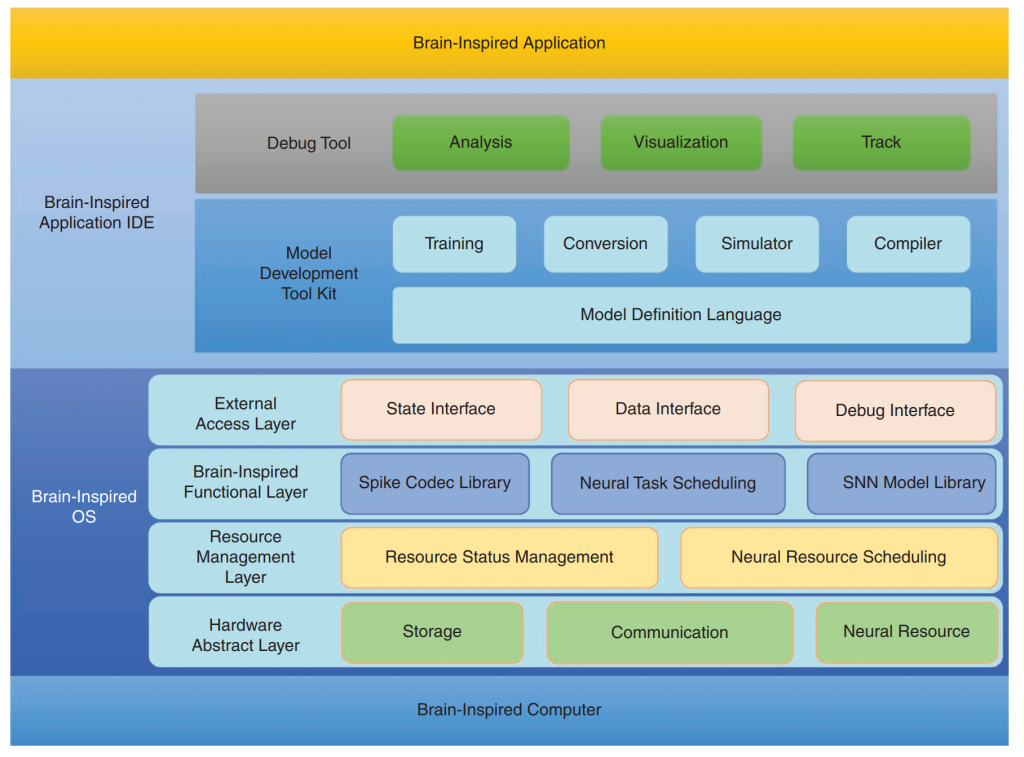How to build a reference software architecture for brain-inspired computers?
Shuiguang Deng, Pan Lv, and Ouwen Jin, Schahram Dustdar, Ying Li, De Ma, Zhaohui Wu, and Gang Pan. “Darwin-S: A Reference Software Architecture for Brain-Inspired Computers” in Computer, vol. 55, no. 05, pp. 51-63, 2022. doi: 10.1109/MC.2022.3144397
Abstract:
“With the reduction of the semiconductor process size, the problems of “memory wall” and “power wall” in von Neumann architectures are becoming increasingly prominent. To solve these problems, brain-inspired computing unifies computing and storage.”
A general-purpose architecture
“Darwin-S is designed to be applicable across different underlying hardware architectures, and this generality is fundamentally based on our abstraction of brain-inspired computers. The architecture and implementation methods among different brain-inspired hardware platforms are utterly different. However, the basic design principle is the same:
- using a large number of specially designed neurosynaptic cores (for example, crossbars on Loihi and TrueNorth, and ARM cores on SpiNNaker)
- simulating neurons dynamics in parallel
- storing synapses’ weight data within or near each neurosynaptic core
- neurosynaptic cores switch spiking messages through specially designed connection paths (for example, networks on chip or Ethernet).”
A reference architecture for brain-inspired computers is shown in Fig.

